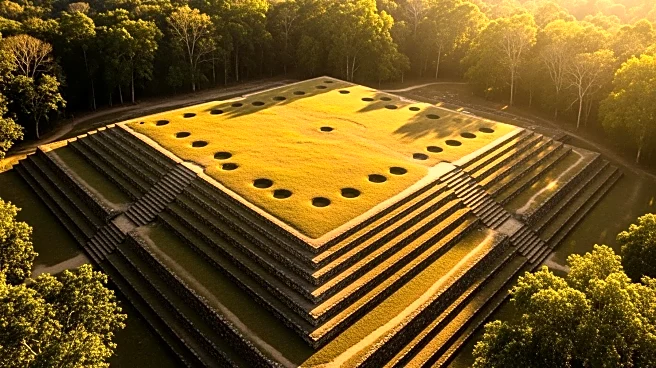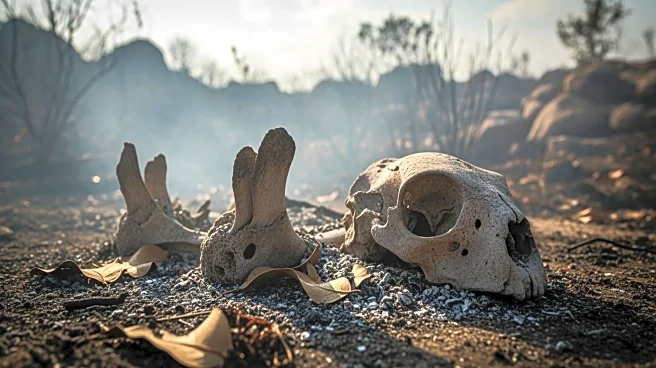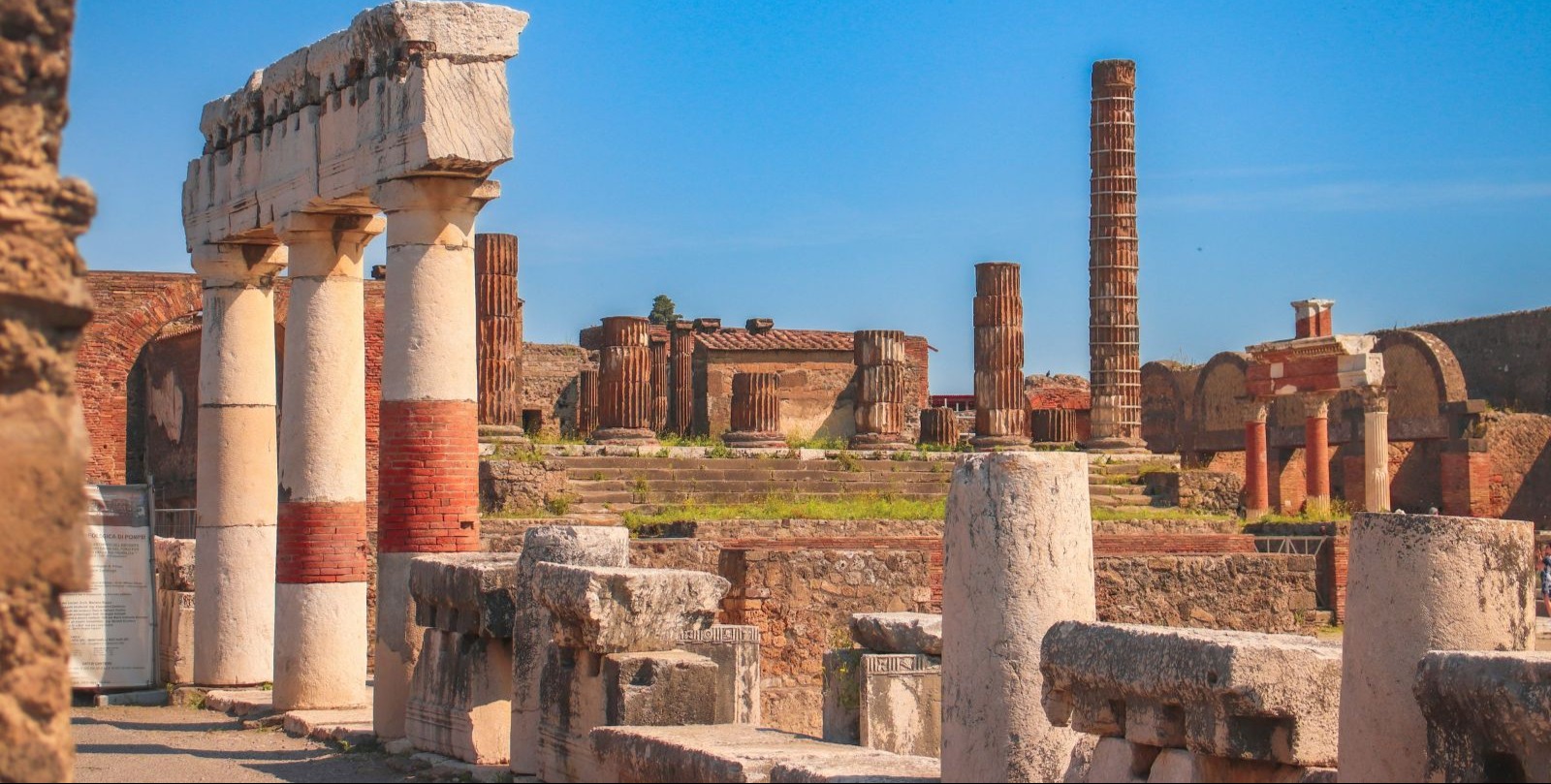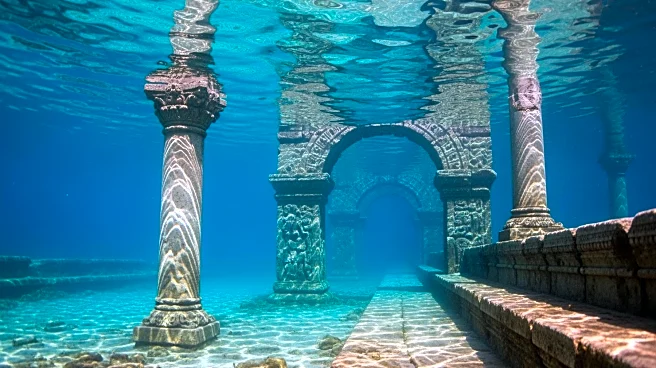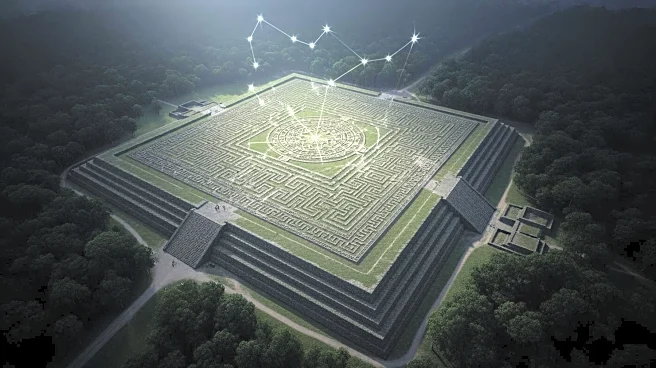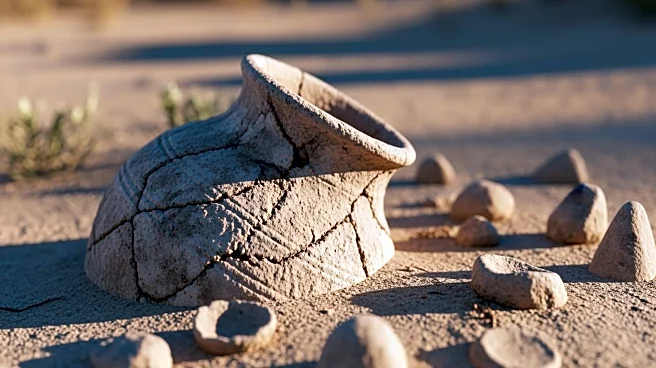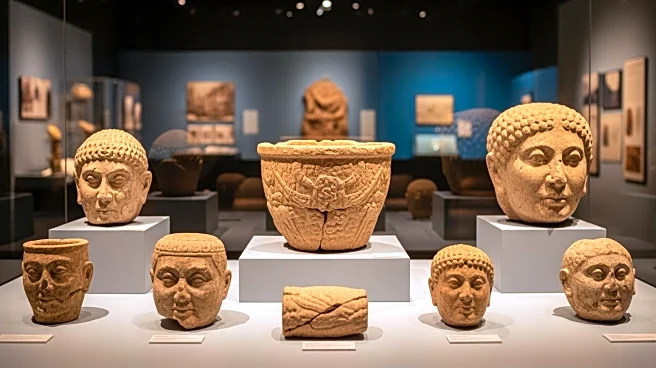What's Happening?
Recent research led by archaeologist Takeshi Inomata from the University of Arizona has uncovered significant findings at Aguada Fénix, the largest and oldest known Maya monument located in Tabasco, Mexico. The study suggests that the monument's architecture
forms a cosmogram, aligning with Mesoamerican calendar sunrises and directions. The site features color-coded pigment caches and marine shells in cross-shaped ditches, reinforcing the directional symbolism central to early Maya cosmology. The findings indicate that the monument was constructed by communal efforts led by astronomers, without elite rulers, revealing ambitious early settlement patterns and ongoing ritual visits.
Why It's Important?
The discovery at Aguada Fénix provides valuable insights into the early Maya civilization, challenging previous assumptions about the development of complex societies. The absence of elite rulers and the communal construction approach suggest a different societal structure than previously thought, emphasizing the role of astronomers and communal efforts in early Maya society. This research contributes to a deeper understanding of the cultural and social dynamics of ancient civilizations, offering new perspectives on the evolution of societal organization and cosmological practices.
What's Next?
Further excavations at Aguada Fénix are planned to explore potential residences and gain more insights into the daily lives of the people who built the site. Researchers aim to understand how these early settlers lived and interacted, which could provide additional information on the societal structure and cultural practices of the Maya civilization. The ongoing research may also lead to new discoveries that could reshape historical narratives about the development of complex societies in Mesoamerica.
